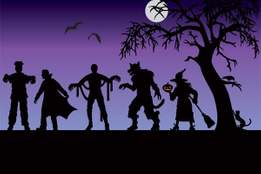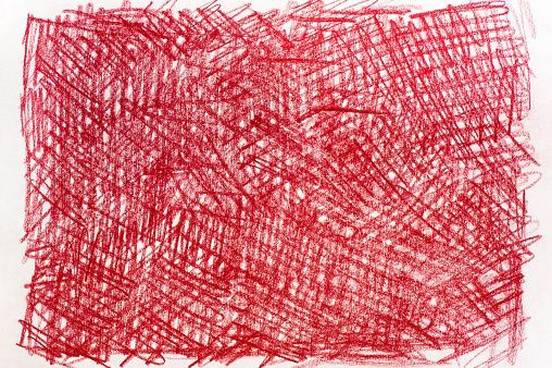
Red
Early political uses of red refer to revolutionary social movements before it became associated with adherents of Marxism-Leninism and Communism, as well as with the former Soviet Union. Besides the Soviet Red Army, formed in the aftermath of the Russian Revolution of 1917, there was the extreme left-wing terrorist organization the Italian Red Brigades, which was active during the 1970s and whose objective was to pave the way for a Marxist upheaval. During the 1960s, the Red Guards were organized by Chinese leader Mao Tse-tung to revitalize the revolutionary spirit of the Communist Party.
Another use of red is in American politics, where it indicates that one supports Republican candidates or their policies. The term red state, for example, gained popularity during the 2000 U.S. presidential election between Republican George W. Bush and Democrat Al Gore. News coverage showed election results with a two-tone map. A red state meant it was won by the Republican candidate and a blue state meant it was won by the Democrat. That election gave momentum to the political use of both colors.
The pundits, the pundits like to slice and dice our country into red states and blue states. Red states for Republicans, blue states for Democrats.
— Barack Obama, speech, 27 July 2004
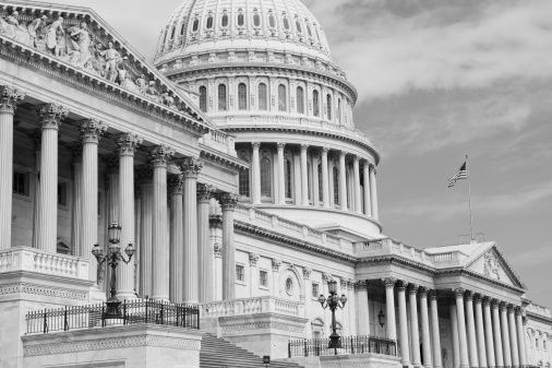
Red-baiting
Baiting refers to a few practices that aren't nice, such as putting food on a hook or in a trap to catch a fish or animal or using dogs to anger, worry, or intimidate an animal (such as a bear or bull). Baiting can also refer to using criticism, derision, or insults to make a person angry.
In the early 20th century, the practice of harassing or persecuting a person who is known as or expected to be a Communist (or a Red) or to have Communist (Red) sympathies became known as Red-baiting.
Red baiting is primarily, it seems to me, making allegations of Communist Party membership or support that cannot be proven.
— Communist Domination of Unions and National Security, 1952

Red Book
Red Book generally refers to an official British register—often of political, economic, or legal affairs—that is bound in red. It is also the title of a book containing information on members of the British court, nobility, or government and other people of social prominence. This Red Book was essentially a directory of "who's who" in Great Britain that faded out as the 20th century wound down.
Webster's Royal Red Book is the best Guide Book that we have met with for the Metropolis of Great Britain. An alphabetical arrangement of residences, followed by another of persons, renders it at once one of the easiest possible of reference for immediate information of that kind which is sought for, not only by strangers, but even by residents. It is carefully done; the whole of the proper names appearing in capital letters, and those of the streets in red ink, accompanied by an almanack, evinces a degree of attention not always bestowed on these matters.
— The Nautical Magazine, May 1848

Red tape
The term red tape has been around for centuries, and it did not always refer to excessively complex official procedures that cause delay or inaction. In fact, red tape originally referred to the red, ribbon-like strips of material formerly used to bind legal documents. Although bureaucracies can get sticky at times, this tape was not the adhesive kind; rather it was simply wrapped around the documents, tied in a knot, and often sealed with wax.
This official use of red tape is recorded in American and British literature. In his introduction to The Scarlet Letter (1850), Nathaniel Hawthorne describes an official document from colonial times, noting the "faded red tape that tied up the package." In Louisa May Alcott's Little Women (1868), young Amy March, after writing out her last will and testament, provides her friend with "a bit of red tape with sealing wax" and asks him to "seal it up for her properly." Thomas Hardy describes a magistrate's office as being filled with legal papers "in packets tied with red tape" in his novel Jude the Obscure (1895).
As red tape was being used in this literal sense, it was already taking on its more common, negative connotation. Legal systems had long gained a reputation of being frustratingly complex and slow-moving, and law documents, typically lengthy and verbose, were material manifestations of an excessively regulated and formalized system. It didn't take long for red tape to symbolize overwrought bureaucracy and bureaucratic rigmarole in general.
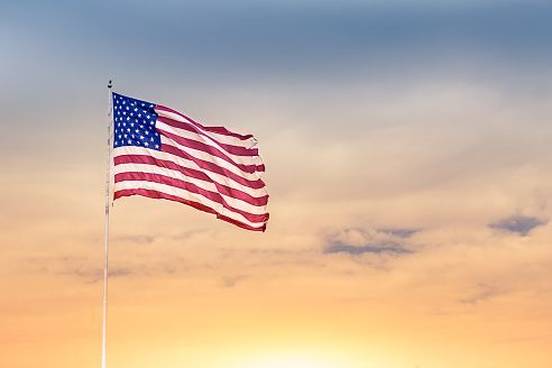
Red, White, and Blue
The original national flag of the United States was the Stars and Stripes. The instructions for its design were approved by the Continental Congress on June 14, 1777: "Resolved, that the flag of the United States be thirteen stripes, alternate red and white; that the union be thirteen stars, white in a blue field representing a new constellation." The number of stripes is still the same, but another star was added to the flag for each new state admitted to the Union.
The nickname Red, White, and Blue started being used (along with Stars and Stripes and Old Glory) during the 1800s.
Flag Day is actually part of a larger patriotic celebration—Flag Week—during which police stations, fire departments and schools are urged to display the flag and government buildings are required to. You can join in by flying the red, white and blue outside your home.
— Michaela Warner, The Idaho Press, 10 June 2020

White
White has been used to describe various conservative or reactionary political groups and their counterrevolutionary actions since the 18th century. Historically, opposition to political groups associated with the color white were those who were associated with (Communist) red.
In November 1917 the Russian Civil War broke out as several factions fought for the power to determine the country's political future. The socialist Bolshevik party, led by Vladimir Lenin, had overthrown the provisional government as different groups battled for control. The two largest groups involved in the fighting were the communist Red Army, and the White Army, which favoured capitalism and monarchism. The White Army was a union of anti-Bolshevik groups, including peasant militias, the Black Army (Ukrainian anarchists) and other groups fighting for their state's independence from the Russian Empire, led by Tsarist officers.
— Lydia Catling, MailOnline, 28 May 2020

White Book
White book is the name for an official report of government affairs that is distinguished by being bound in white. Official white books have been written since the 15th century.
Under Busch's watch as speaker, nearly $11 million in capital grants were put towards Maryland Hall from 1999 to 2018, according to the Maryland white book. The funds have been used to renovate portions of the 87-year-old building.
— Brooks Dubose, The Capital Gazette (Annapolis, Maryland), 8 Sept. 2019

White-bread
White bread has been a staple food for centuries. In the 20th century, its name was kneaded into an adjective (white-bread) to identify values or attitudes associated with members of the white middle class and, in general, people or things conventional, uninteresting, or bland.
Beyond its dazzling special effects, the best element of Back to the Future is the performance of Michael J. Fox, who finds himself in the quagmire of surviving the white-bread 1950s with a hip 1980s mindset.
— Hal Erickson, The New York Times, 3 July 1985... we already have one new fun show, Fox's "9-1-1." With "Black Lightning," The CW has given us another entry—an entertaining, edgy piece of escapism that adds some much-needed diversity to the network's lineup of white-bread soap operas.
— Robert Rorke, The New York Post, 7 Jan. 2018

White-collar
White-collar is an adjective for the salaried individuals who perform nonmanual tasks at a desk and who often—or at least used to—wear shirts having a white collar to the office. White-collar people don't need to wear the protective clothing of some blue-collar workers, but they might need a stain remover since white shows every little spot of food, drink, and ink. The term's employment began in the early 20th century.
The adjective is sometimes partnered with crime. A "white-collar crime" is one committed by white-collar workers or businesspeople that usually involves a form of financial theft or fraud, such as money laundering, embezzlement, a Ponzi or Pyramid scheme, or insider trading.
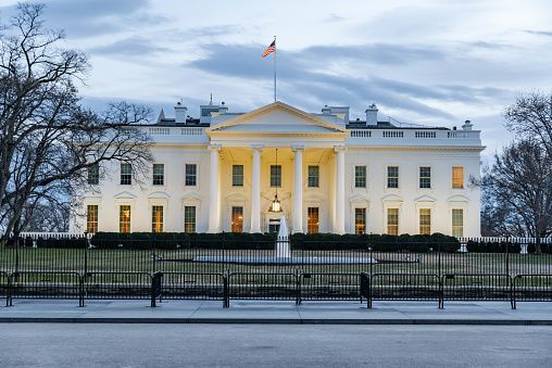
White House
The White House is a mansion at 1600 Pennsylvania Avenue in Washington, D.C., at which the president of the United States resides. It has been variously called the "Executive Mansion," "President's Palace," and "President's House."
… he first stumbled across the idea for the book when reading a brief mention elsewhere about Cleveland having had a mouth operation during his time in the Executive Mansion. (1600 Pennsylvania Avenue wasn't yet called the White House when the Clevelands occupied it.)
— Charity Vogel, The Buffalo (New York) News, 21 May 2011He avoided fancy garb and insisted on simpler oath-taking ceremonies than those accompanying George Washington's and John Adams's induction into office. And he soon rechristened the "President's Palace" the "President's House."
— Paul Boller Jr., "Pennsylvania Avenue," 2000
By metonymy, the name White House additionally is used for the executive department of the U.S. government, as in "The White House announced the new appointments to the Cabinet."

White paper
During the 19th century, white paper started being printed as a name for a government report—particularly, one from the British Parliament—that is usually less extensive than a blue book (which we will be reporting on soon). A white paper is similar to a command paper. The term is also generally applied to any detailed or authoritative report outside of politics.
The Daily Telegraph understands that the Government was considering moving responsibility for some major developments from councils to the Housing Secretary. Ministers believed the Prime Minister would include the proposals in a white paper later this year, and had expected him to reference them in a major speech next week on rebuilding Britain after the coronavirus downturn.
— Gordon Rayne and Harry Yorke, The Daily Telegraph (London), 26 June 2020After the fourth negotiating round, Michel Barnier, the EU's chief negotiator, said there were some concerns with the Government's plans for the province. The Frenchman on June 5 said: "Some of the objectives set out in this Command Paper—such as avoiding exit declarations on goods moving from Northern Ireland to Great Britain—are incompatible with the legal commitments accepted by the UK in the Protocol."
— Joe Barnes, The Express (UK), 18 June 2020

White-shoe
A person described as "white-shoe" is said to be of the upper crust, of the privileged, moneyed upper class. Another characteristic might be being an alumnus of an Ivy League university or college at which white shoes were once fashionably worn. White-shoe is also commonly used to describe prestigious, reputable law or financial firms that hire promising white-shoe law or business graduates.

Blue
In U.S. politics, blue is the color used to indicate that one supports Democratic candidates and policies (e.g., "As predicted the candidate won the blue state"). During the American Civil War, blue was enlisted as the name for a Union soldier as well as the Union Army ("a battle of Blue versus Gray"). It is also the name of one of three primary colors (the others being red and yellow) that can be mixed to make other colors. Blue and red make purple, a fact that led to that color's name being applied as a word for mixed support for Democratic blue and Republican red candidates and policies.
Once a reliably red district, it now leans purple. Voters there twice delivered solid victories for George W. Bush, then backed Sen. John McCain from the red side. Then they went twice for the blue candidate, Barack Obama (an 11-point winner in 2012) and Hillary Clinton (who won by just 3 points).
— Joseph Curl, The Washington Times, 19 May 2020

Blue book
A blue book is a publication (bound in blue) containing information issued or reported by the government. It is also a directory or register especially of people of social prominence, such as the Royal Blue Book: Fashionable Directory, and Parliamentary Guide.
In the few cases where the names or salaries of public officers and clerks, contained in this book, will be found to differ from those contained in the Official Register, commonly called the Blue Book, … the public will please bear in mind that the Blue Book contains the names and salaries as they stood on the 1st of October, 1841.
— The Reference Book of the United States, 1841There is also a publication, technically called the Blue Book, intituled "General Regulations and Orders," issued from the office of the Adjutant-general….
— The Parliamentary Debates, 15 June 1815The Colonial Office in Downing-Street has received annually, for a series of years, a Blue Book in manuscript from each Colony, containing a variety of commercial, financial, ecclesiastical, and general information, for the use of government.
— The New Monthly Magazine, February 1839
Students have been using "blue books" for writing answers to examination questions since the 19th century. In the early 20th, blue book became the name for the periodically issued list of the estimated value of used vehicles in which people referenced to find "blue book values."

Blue-collar
Blue-collar is an adjective that describes a class of wage earners whose manual labor calls for the wearing of often blue or dark overalls, jeans, or other rugged, durable, or protective clothing that can "hide" dirt and grime. Blue-collar workers labor at job sites, on factory floors, or at assembly lines—not behind desks. Both blue-collar and white-collar are gainfully employed by the early 20th century.

Blue law
In colonial New England, a blue law referred to a law established to regulate morals and conduct. A few blue laws are still on the books in some U.S. states—particularly statutes that prohibit working, the sale of alcohol, hunting, and public amusements on the Lord's day, Sunday.
Etymologists are still searching for a convincing explanation as to why these laws are "blue."

True-blue
It is impossible to say for sure why and when the color blue became a symbol of constancy and faithfulness, but the word blue has represented those qualities in print since the 17th century. Around the same time, true-blue was being used to describe someone with unswerving loyalty or being simply genuine, as in "a true-blue supporter of the Democratic/Republican party" or "a true-blue gentleman."

More Political Words
We break down the usage, differences, and histories of political words in the daily news. LEARN MORE >





